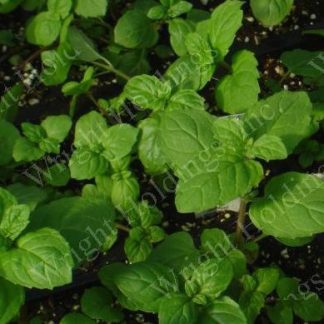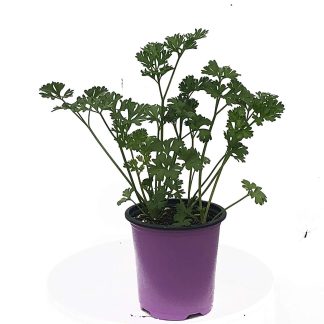Description
Greek Oregano: The Bold Herb That Defines Mediterranean Flavor
Greek Oregano (Origanum vulgare ssp. hirtum) is more than just a simple herb. It is a symbol of warmth, shared meals, and centuries-old culinary traditions. Its rich aroma and bold taste have seasoned countless dishes, from rustic mountain stews to wood-fired pizzas, and its reputation in gardens and kitchens around the world is well deserved.
In this guide, we will explore what makes Greek Oregano so remarkable—its history, flavor profile, growing habits, and uses in the kitchen and beyond.
A Glimpse Into Its Mediterranean Roots
Greek Oregano traces its origins to the sun-drenched hillsides of the Mediterranean, particularly Greece and surrounding regions. Ancient cultures considered it a gift from the gods. In Greek mythology, oregano was believed to have been created by Aphrodite as a symbol of happiness. Wreaths of oregano were even used at weddings to bless couples with joy and prosperity.
This cultural legacy is not just poetic. The herb’s hardy nature and intense aroma made it valuable for preserving and flavoring food long before refrigeration existed. Today, it remains one of the defining flavors of Mediterranean cuisine, especially Greek, Italian, and Turkish dishes.
Flavor and Aroma: Bold and Inviting
The first thing you notice about Greek Oregano is its unmistakable scent. It is pungent, earthy, and slightly peppery, with a subtle bitterness that adds complexity to food. Unlike milder oregano varieties, Greek Oregano offers a more intense and authentic flavor prized by chefs and home cooks alike.
- Aroma: Strong, warm, slightly spicy.
- Taste: Robust, with earthy and bitter undertones.
- Best Pairings: Tomato-based sauces, grilled meats, roasted vegetables, bread dips, and marinades.
When dried, Greek Oregano intensifies in flavor, which is why dried oregano is often preferred in cooking. A pinch can transform a simple dish into something extraordinary.
Botanical Beauty in the Garden
Greek Oregano is a perennial herb, meaning it comes back year after year. It grows into a bushy, compact mound about 18–24 inches tall and equally wide. Its dark green, oval leaves are small yet packed with essential oils that give the plant its signature punch of flavor.
During summer, it bursts into bloom with clusters of tiny white flowers. These flowers are more than ornamental—they draw in pollinators such as bees and butterflies, creating a lively, biodiverse garden environment.
Key Growth Traits
- Height and Spread: Up to 24 inches tall and wide.
- Foliage: Small, oval-shaped leaves, rich green with a slightly fuzzy texture.
- Flowers: White blooms in summer that attract pollinators.
- Growth Habit: Compact, bushy, and easy to maintain.
Growing Greek Oregano at Home
One of the joys of Greek Oregano is how forgiving it is to grow. It thrives with minimal care and rewards you with flavorful harvests season after season.
Preferred Conditions
- Sunlight: Full sun for best flavor (6–8 hours daily).
- Soil: Well-drained, sandy or loamy soil; poor soil enhances flavor concentration.
- Water: Drought-tolerant once established; water only when the soil is dry.
- Climate: Hardy in USDA zones 5–9; can overwinter in mild climates or grow in pots indoors.
Planting Tips
- Start from seeds, cuttings, or nursery plants.
- Space plants 12–18 inches apart to allow air circulation.
- Pinch back stems early in the season to encourage bushy growth.
Care and Maintenance
- Pruning: Regular trimming encourages new growth and prevents woody stems.
- Fertilizing: Minimal feeding; too much fertilizer reduces flavor intensity.
- Overwintering: Mulch lightly in colder climates or grow in containers for easy indoor transfer.
Harvesting and Preserving
Greek Oregano is most flavorful just before it flowers. Harvest sprigs by cutting stems in the morning after dew has dried but before the midday heat.
- For fresh use: Snip as needed and add directly to dishes.
- For drying: Bundle stems and hang in a dark, airy place until crispy. Strip leaves and store in airtight containers.
Dried oregano often surpasses fresh in flavor intensity, making it a pantry essential for year-round use.
Culinary Delights with Greek Oregano
Greek Oregano is inseparable from Mediterranean cooking. Its bold flavor enhances simple and complex dishes alike.
Classic Uses
- Pizza and Pasta: Sprinkled over marinara sauce or baked into pizza crust.
- Grilled Meats: Mixed into marinades for lamb, chicken, or pork.
- Vegetables: Tossed with olive oil, garlic, and roasted potatoes.
- Salads: Essential in Greek salad, combined with feta, olives, and tomatoes.
Creative Twists
- Infuse olive oil with oregano for dipping bread.
- Add to homemade vinaigrettes for a zesty kick.
- Blend into rubs for barbecued meats or roasted vegetables.
Medicinal and Wellness Benefits
Beyond the kitchen, Greek Oregano has long been valued for its medicinal properties. It contains compounds like carvacrol and thymol, known for their antimicrobial and antioxidant qualities.
Traditional Uses
- Digestive Aid: Helps soothe bloating and indigestion.
- Immune Booster: Rich in antioxidants that support overall wellness.
- Respiratory Support: Herbal teas made from oregano leaves were used historically to ease coughs and colds.
While these uses are rooted in tradition, many modern studies support oregano’s beneficial compounds, making it a valuable herb for culinary and wellness purposes alike.
Perfect for Containers and Small Spaces
Not everyone has a sprawling garden, but Greek Oregano thrives in containers just as well as in the ground. Its compact size and low water needs make it perfect for patios, balconies, or even sunny kitchen windowsills.
- Choose a container with good drainage.
- Use sandy, well-draining soil.
- Water sparingly; avoid soggy roots.
- Trim regularly to prevent legginess and encourage fresh growth.
Companion Planting Benefits
Greek Oregano is a great companion in the garden. Its strong aroma can help deter certain pests like aphids and cabbage moths. Plant it near tomatoes, peppers, or beans for both culinary convenience and natural pest protection.
Why Every Garden Needs Greek Oregano
Greek Oregano is more than a herb; it is a bridge between garden and table, past and present. Its robust flavor transforms meals, its beauty enhances gardens, and its resilience makes it perfect for gardeners of all levels. Whether you grow it for fresh pizza toppings, aromatic oils, or simply to watch the bees and butterflies it attracts, Greek Oregano brings joy and practicality in equal measure.
Bringing Bold Mediterranean Essence to Your Table
Growing Greek Oregano is an invitation to savor flavor at its source. Each leaf connects us to centuries of tradition and to the vibrant landscapes where this herb thrives naturally. By planting even a single pot, we add depth to our cooking and beauty to our gardens—season after season.




